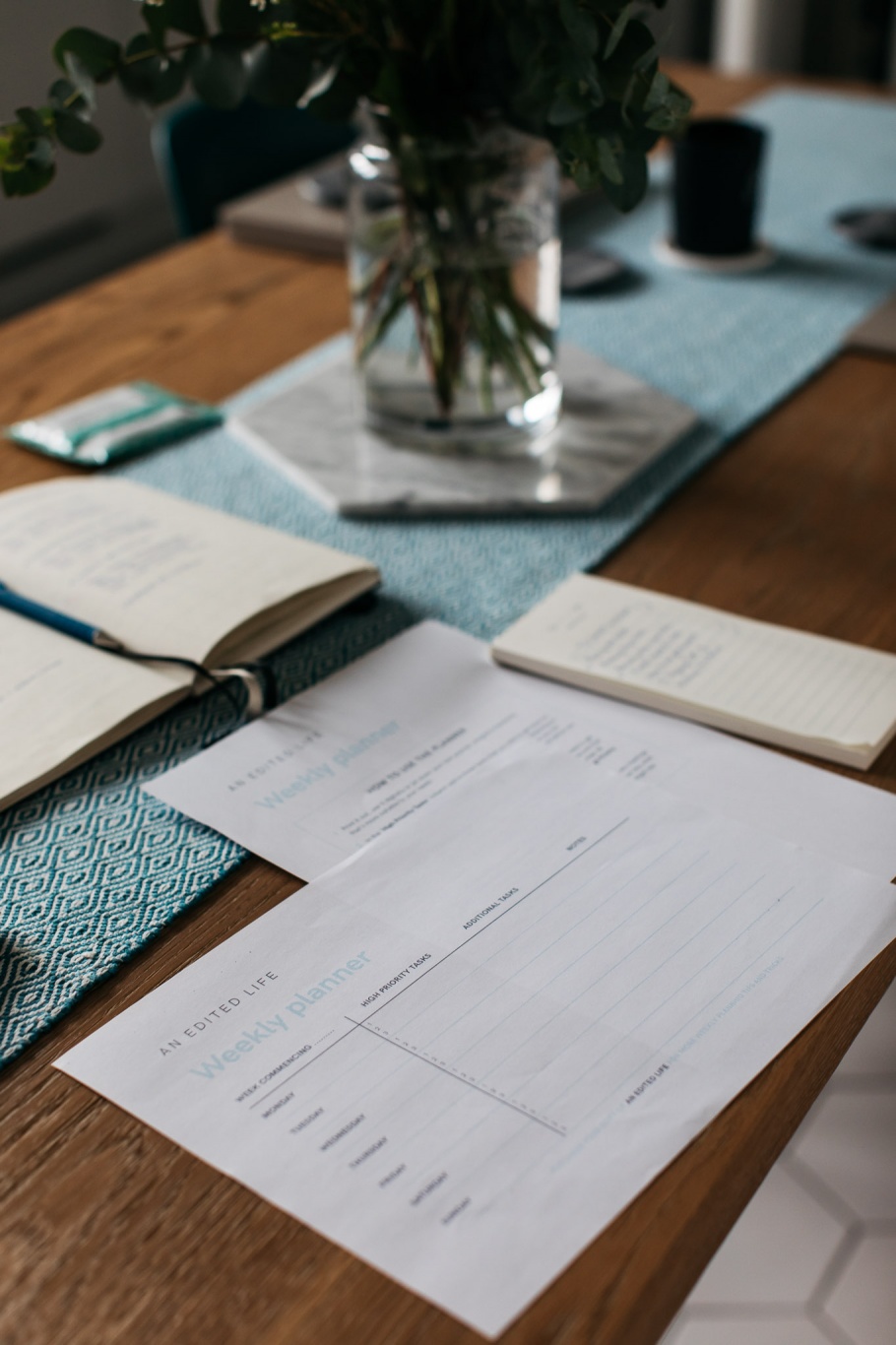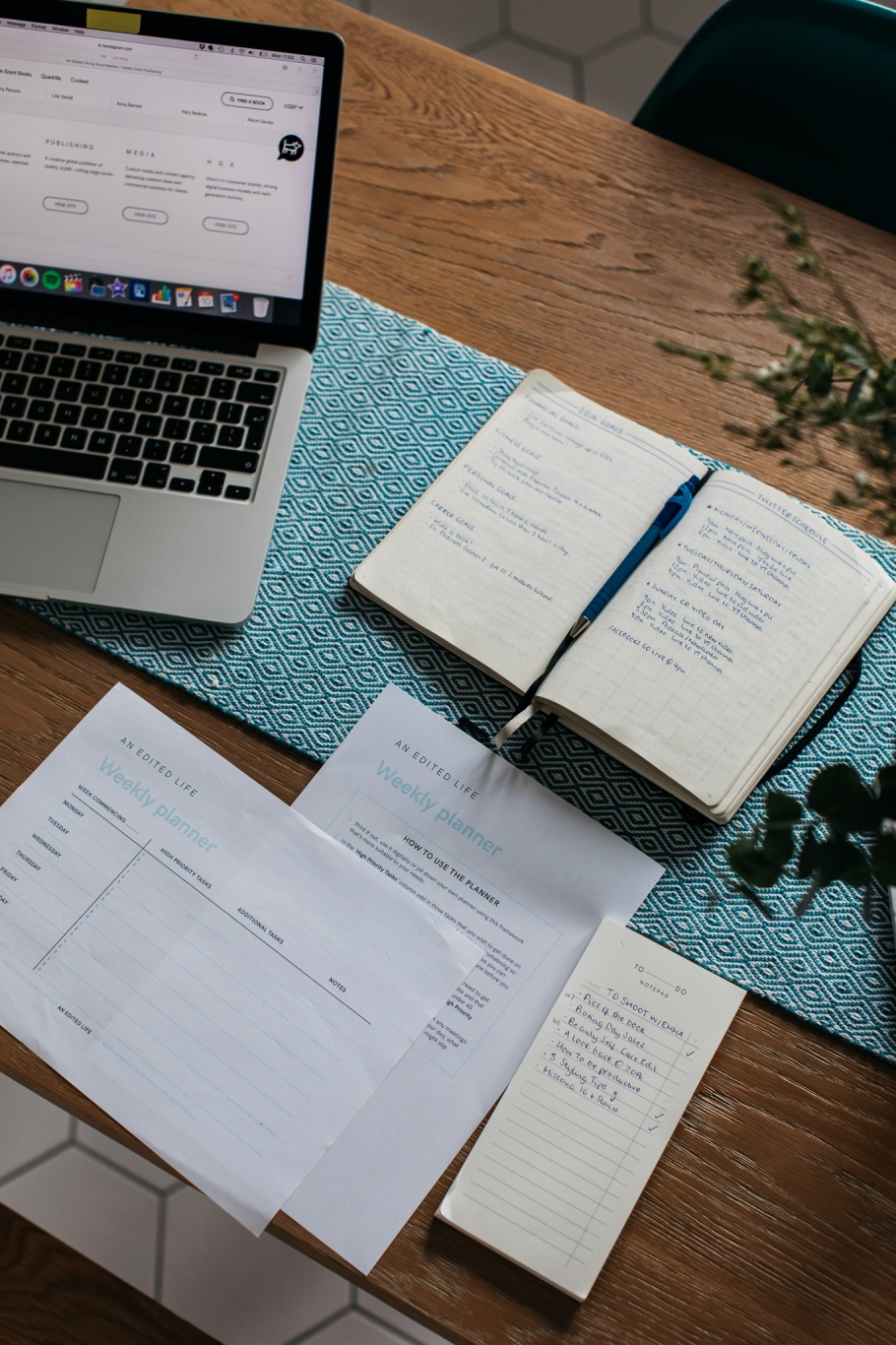Starting off the first working day on 2019 on the right foot, eh?

HELLO 2019! How are we all doing? Hangovers subsided by this point? I have to say that I felt pretty alright yesterday despite the fact that I discovered the wonderful combination that is Cointreau and Lemonade this NYE. We had friends come and stay so yesterday was spent tidying, doing laundry and taking the Christmas tree down as yes I come from one of those Grinch families who likes to take the tree down AS SOON AS POSSIBLE after the big day.
Unsurprisingly I am really here for the first working day of the new year. Of course it’s completely in tune with my personality type to love the idea of a fresh start, a new page if you will and there’s just something so hopeful about the prospect of a brand-spanking new year. I always love it and this morning I’ve already prepared my weekly plan for the next two weeks. They’re going to be a little wild with ‘An Edited Life‘ finally being published – 10TH JANUARY!!! – and so I felt the need to write a plan and attempt to get ahead even more than usual. So this morning I thought I’d share this timely post about how I arrive at my to-do list and the steps that I go through in order to make one that doesn’t feel overwhelming and instead arms me with a plan that makes me feel like I have my cards in order for the week ahead. We’ve got this…




STEP ONE: Get up to date. A to-do list just doesn’t work if you don’t combine it with your weekly schedule. Got meetings all of Monday? Then the chances are that your to-do list will remain pretty untouched, so set yourself tiny tasks, or leave it completely free from them. Got a huge meeting on Wednesday afternoon? Then it’s best to leave your morning free from tasks that aren’t related to prepping for that. I keep all my scheduling in iCal, so things like meetings, deadlines, upload dates, shoots and events are all in there. I then keep my to-do list in my Bullet Journal, setting myself a handful of tasks to complete each day, a weekly plan never going over more than one page because otherwise it’s definitely not being completed. But in order to collate my weekly plan, I first check my iCal to see how my week is panning out. You’ve got to blend the two in order to create a to-do list that actually has a chance of being ticked off.
STEP TWO: Learn from the past. One big thing that I feel like we tend to ignore (and actually plays a huge part in the planning sections in An Edited Life) is that we ignore ourselves when it comes to planning; how we feel emotionally and physically at different points of the day, week or month. If you can barely keep your eyes open come the 3pm slump, then why the hell are we planning to do our most high priority tasks post-lunchtime? Take note of how you feel during the working day and take that into account when you’re planning. For me I’m at my most spritely in the mornings, so I always set myself the task of writing blog posts then as they require the most brain power. The afternoons are always a slog for me, so I set myself tasks that I can complete while listening to music or a podcast to keep me going and make it fun; things like adding photos to posts, editing a video, making thumbnails, updating the Instagram Shops. Just listening to your energy levels could mean that you completely obliterate your to-do list, instead of dragging your heels through tasks that just feel impossible for you at that moment in time.
STEP THREE: Be realistic. There is something about us human beings that makes us be terribly unrealistic with our time. If only you had a penny for every time you thought you could complete something in an hour and actually it took four – am I right? Our lists ultimately make us flustered when we’re not being realistic with them. A long 10, 20, 25 point to-do list is not going to be completed in a day. Even if the tasks are short you’ll end up going off task, or being distracted by one that’s taken you longer than expected. So chop your list down, factor in plenty of time for each task and if you think that it’s going to be a long one then make sure that your schedule reflects that. Quality over quantity and all that. If you feel like you keep falling into this trap then use one working week to time each task that you do, note down the results and use this when you’re making your plan for the following week.


STEP FOUR: Find your framework. How you note down your weekly plan is going to be different for everyone. If you’ve pre-ordered your copy of ‘An Edited Life’ then drop an email to aneditedlife@hardiegrant.co.uk with proof of your purchase to be sent a link to download the #AEL Life Organisation Worksheet Bundle which includes the print-out weekly planner that I’m using in the post above. But feel free to create your own, or use a Bullet Journal, a diary, a notepad, a post-it – whatever. Personally I use one page in my Bullet Journal and fit a whole week’s worth of planning on there. It keeps all my planning in one place and because of page constraints I’ve learnt to keep them concise and therefore easier to complete.
STEP FIVE: Three tasks a day. Here is my biggest tip of them all. On your weekly plan, write down three tasks only to completely each day. It might sound a bit stripped back, but it makes perfect sense. Three tasks a day splits up nicely; do one when you first clock in, one either before or after lunch or take your lunch to break it up, and then do one final one in the afternoon before you pack up for the day. You could event categorise your tasks so that you do a creative task in the morning, a project-focused one over lunch and admin in the afternoon. Of course there are always smaller odds and sods that you could tick off in around five minutes, so I add these to a smaller list and aim to complete them when I have short pockets of time that aren’t long enough to get into the meaty stuff. But meaty stuff? I only ever factor in three a day, which gives me the highest chance possible of actually getting them done because it never feels too overwhelming.
STEP SIX: Be precious with your time. If you still feel like you’re struggling to find your productivity flow then perhaps it’s time to be more precious with your working hours. I know that working for myself I have to dodge random coffees and meetings that would ultimately take me away from my desk for whole days at a time. It’s about working out what tasks you do that make you feel great and like you’re getting through your workload and then finding what things that can be removed from your schedule – even just temporarily switched around – so that you have more time to do those tasks. What I’ve found works best for me, is to always have Mondays at home if possible as they are often when I experience my highest levels of motivation in the week, and containing all my London-based things into one day a week if possible. Be selfish, allocate your time efficiently, and get shit done.
Photos by Emma Croman
Find more productivity and motivation tips in my book, ‘An Edited Life’













Comments